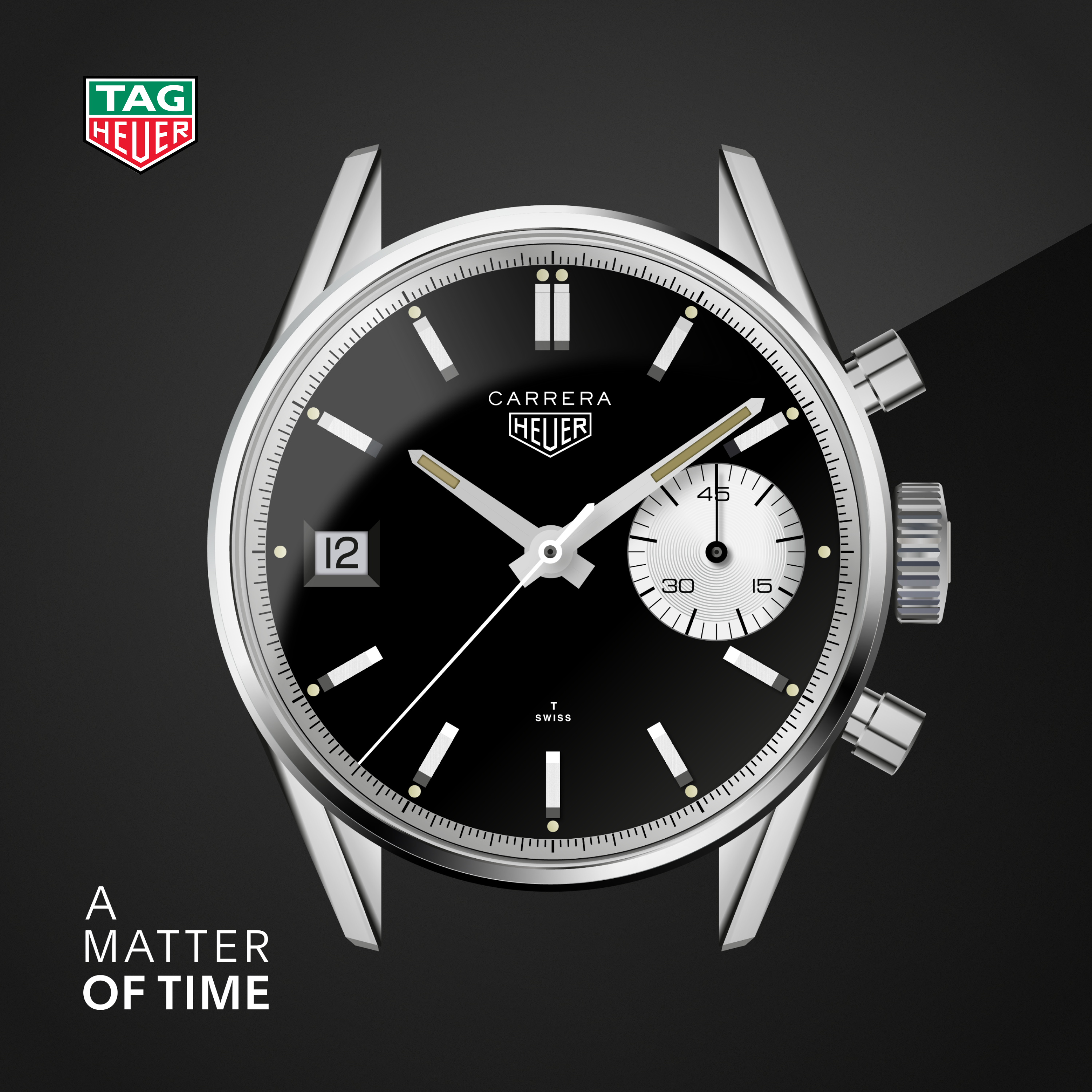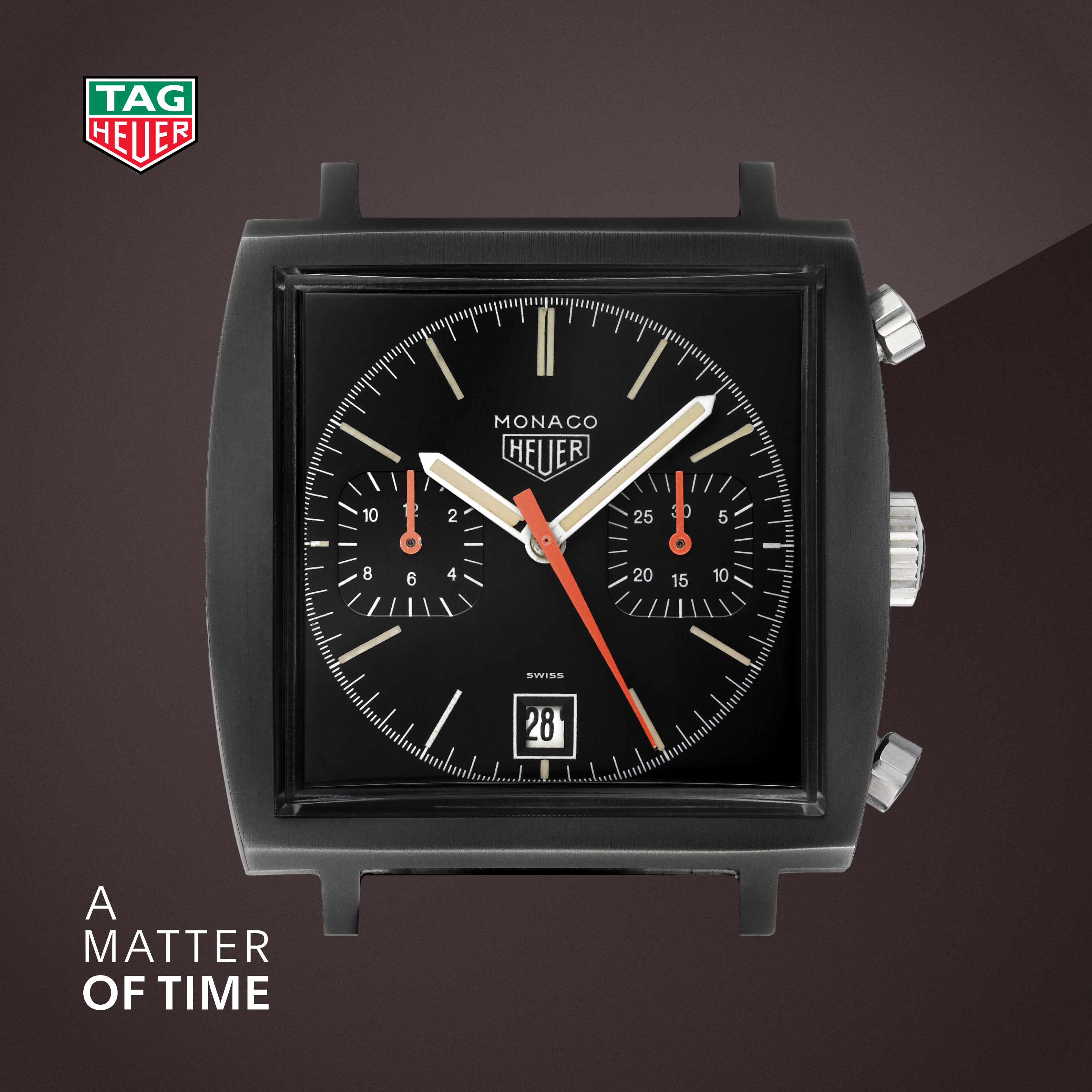Episode Transcript
Speaker 1 00:00:02 Welcome to a Matter of Time, a podcast by Tago. I'm your host, Nicholas Bbe, heritage Director at Tagore, and a passionate en enthusiast for fine twist watchmaking. In this series, we're gonna dig into the archives of Tagore, pull out some of the most iconic watches from our history, and see how they guide the direction and philosophies of the brand today. In the first episode, we discussed the Carrera Pan Americana, this legendary road race of the 1950s. As well as some of the watches the Hoyer was producing Imperial that would see application by some of the drivers who might have been racing in the event. In today's episode, we're gonna move into the 1960s and look at the birth of the Carrera as a collection, as well as how Jack Hoyer our charismatic c e o at the time, found his way to the name. Let's wind the clocks back to the 24th of March, 1962. We're at Severing Raceway in Florida, a disused army airfield, and it's been converted to one of the great racetracks of North America in the period taking place. That weekend is the 12 hour endurance race. Once again. Many of the greatest cars in production at the time are on display with some legendary drivers at the wheel.
Speaker 1 00:01:23 We can see the Ferrari two 50 GTO and Te Rossa. Porter's News, seven 18 RS 60 and an up and coming Hollywood actor by the name of Steve McQueen driving on Austin Healy. It's quite the diverse field of cars and it makes very entertaining racing standing in the pits of the North American racing team, operated by Luigi Jeanti. The Ferrari distributor for the US is one Jack Hoyer. Jack has just turned 30, and he's working for the family business, the fourth generation to do so. He's moved from Switzerland just a few years earlier to set up Hoya Timing Corporation of America to support the development of the business in the key market. That was the us. He's been invited to the race by the Sports Car Club of America, as he's generously provided them with timing equipment to record the performance of the entrance. He should also be there to look on how to develop their business further, observing the wealthy members of the audience and visitors to the pit lane, who are clearly ideal customers for timing equipment and wristwatches bearing the Hoya name.
Speaker 1 00:02:32 But he can't help but be captivated by the performance in the early stage of the race by young Pedro Rodriguez, he's setting the fastest laps, striving the incredibly beautiful Ferrari 2 46 SP Dino, and he's putting in an incredible performance. His co-driver in the race is his brother Ricardo, and standing in the NAR garage are the parents of these two young Mexican racing drivers. Jack happens to find himself in a conversation with them, and they express how grateful they are that the boys aren't just a few years older, because if they've been racing in the Carrera Pan Americana during the early 1950s, they might not be a lie today due to the danger of the race, the great pressures that have put upon the drivers and the machines over thousands of kilometers and many, many days at the wheel, it's easy to understand why the parents were glad that the boys didn't take part. As Jack is being regaled with these wonderful stories of the Carrera, the name rings in his ears. He finds it beautiful, elegant, and fills it in an ideal name for his next product launch. On his next return to Switzerland, the first thing he does is he registers the name against a wristwatch exclusively for hu.
Speaker 1 00:03:48 Having launched the Ottavia in 1962, a robust durable wristwatch, specifically designed for high demand environments, whether it be the airplane, cockpit or the racetrack. Jack wanted to offer a more elegant chronograph, something with a pure, more minimalist design that played into the sensitivities that he had for some of the incredible designers of the era. And in 1963, we witnessed the arrival of the Carrera initially offered as two references, the 24 47, with three registers powered by the Val Jo, 72 and a two register version, the reference 36 47, the earliest designs, which are a number of crates that were unique to the first series of watches. There are distinctive features of the CreER that remained throughout all generations of this uh, series of watches. The peaked lugs that have become a distinctive design trait of the collection, the clear legible dial with the minimal text that one can require, commencing with the model name Carrera, then the Hoyer logo and the Swiss signature of the bottom to designate where the product was made and one of two dial variations, either a Silvered version or a black equivalent.
Speaker 1 00:05:03 The very earliest watches have a number of slight detail variations that a certain small group of collectors obsess over, rather than the brilliant sole sunburst finished. That is more common with the silver Dar. For these, uh, reference 2 4 47 Corres, or 36 47 to register versions, we see this semi mat so-called eggshell finish, which is really unusual and distinctive finish when it's seen in person. There's the poly back as it's referred to with its multi-sided edges rather than notch teeth that is more commonly seen, slightly longer hour marks on the Dow, slightly more slender hour minute hands, and an unsigned crown rather than the latest Hoya signed crown that we see on the other carreras. It might seem strange to many people to look at these very small differences from the standard production piece compared to the earlier production batch, but it's exactly the sort of nerdy, distinctive details that many enthusiasts of vintage chronographs love.
Speaker 1 00:06:00 Quite quickly, Jack knew that he had a hit on his hand in 1963 and 1964. We know that the watch was performing well and very quickly production had to scale up. Different supplies were bought online, and slowly but surely the design would evolve slightly in the latter half of the 1960s. We would see a design variation that would introduce a panda and reverse panda configuration, and most interestingly, in 1965, we would launch a Carrera with a complication in addition to that of the chronograph. And not to give too much away now, but that's exactly the watch that we'll be discussing in the next episode of a matter of time. Thank you very much for listening today. I do hope you've enjoyed some of these great stories from the past of Tag Hoya. I'd love to be able to share them with you. Don't forget to review and subscribe wherever you get your podcasts, and I'm looking forward to sharing more bits of history from the archives in future episodes.


